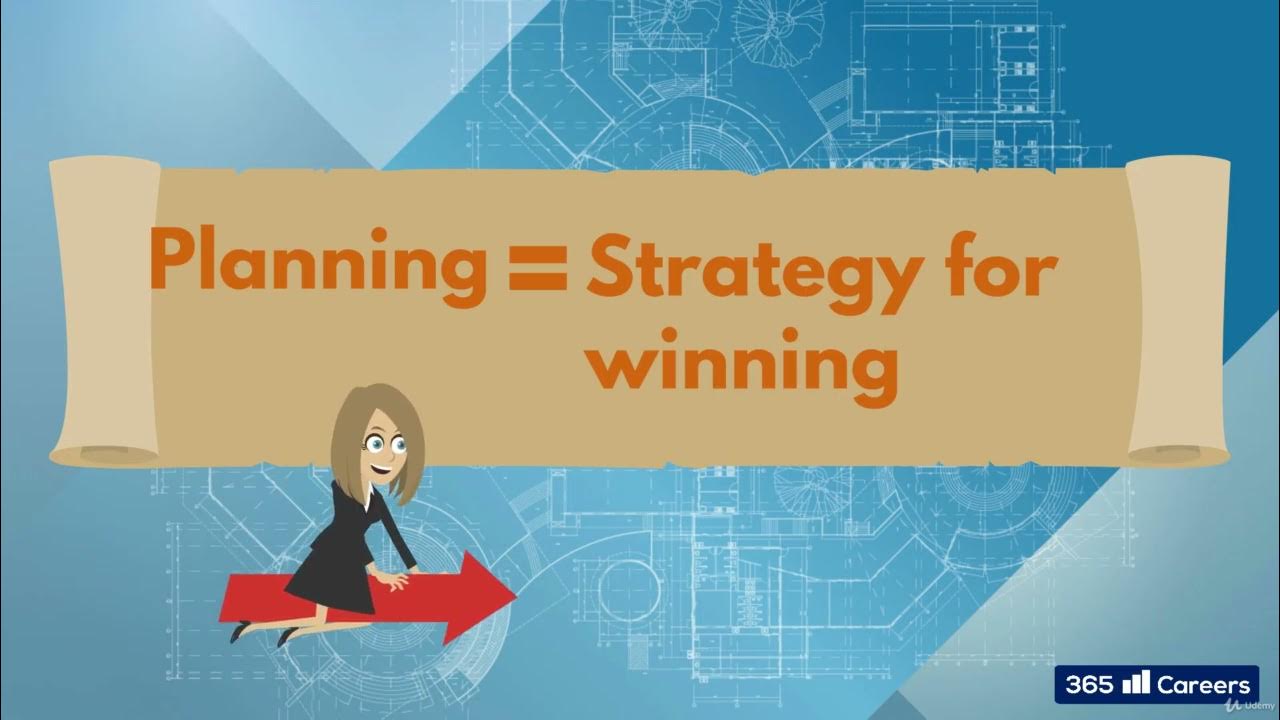Lecture 01: Introduction to Project Management - I
Summary
TLDRThis course on Project Management is structured into four phases: initiation, planning, execution, and IT tools for project management. It covers project selection, management, and organization structures, emphasizing the importance of the project manager's role. The course also delves into planning activities, risk management, and execution strategies, including earned value analysis and agile tools. The textbook by Meredith and Schaffer is adapted with Indian cases. The lecture discusses the evolution of project management, the triple constraint of scope, time, and cost, and the characteristics of projects, highlighting the Chandrayaan 3 mission as a case study in successful project execution.
Takeaways
- 📚 The course is structured into four phases: initiation, planning, execution, and IT tools for project management.
- 🔍 Phase 1 focuses on project initiation, covering topics like project management introduction, agile project management, and project selection models.
- 📈 Phase 2 is about project planning, including traditional and agile planning, risk management, and scheduling techniques like CPM and PERT.
- 🛠️ Phase 3 deals with project execution, discussing project monitoring, controlling, earned value analysis, and change control.
- 💻 The final phase introduces various software packages for executing complex projects and provides demonstrations.
- 📖 The course adopts a textbook by Meredith and Schaffer, with added Indian cases to contextualize the learning.
- 🌟 Project management is crucial across all domains, including construction, government, and software industries.
- 🚀 Chandrayaan 3 is highlighted as a successful project managed by ISRO, emphasizing the importance of clear objectives and detailed planning.
- 🔑 The triple constraint in project management includes scope, time, and cost, which are interrelated and require careful management by the project manager.
- 🔄 Projects are temporary endeavors with unique outcomes, and their success depends on balancing the triple constraint and managing ancillary goals.
- 🏢 Projects are often part of larger programs and must be managed considering their interdependencies and the health of the project team.
Q & A
What are the four phases of the Project Management course outlined in the script?
-The four phases of the Project Management course are project initiation, project planning, project execution, and IT for project management.
What is the focus of the first phase in the Project Management course?
-The first phase, project initiation, covers topics such as introduction to project management, agile project management, project selection models, and the importance of the project manager.
What does the third phase of the course, project execution, include?
-The third phase, project execution, includes planning, monitoring, controlling the project cycle, earned value analysis, agile tools for tracking, project controlling, control of change scope, project audit, and closing projects.
What is the purpose of the last phase in the course?
-The last phase is designed to introduce various software packages for executing complicated projects and provide demonstrations on project management software.
What is the textbook reference for the course as mentioned in the script?
-The textbook reference for the course is a book written by Professor Meredith and Schaffer, with the Indian edition adopted and having added Indian cases.
How is the term 'project' defined by the Project Management Institute according to the script?
-The Project Management Institute defines a project as a temporary endeavor undertaken to create a unique product, service, or result.
What are the three constraints that a project manager needs to manage according to the script?
-The three constraints that a project manager needs to manage are scope, time (specific deadline), and cost (budget).
What is the significance of the Chandrayaan 3 mission as an example of project management mentioned in the script?
-Chandrayaan 3 mission is highlighted as a successful example of project management, showcasing learnings from failures, clear project objectives, detailed planning, collaboration, and continuous monitoring and control.
What is the difference between a project and a program as described in the script?
-A program is a substantial long-range objective broken down into projects, while a project is a subdivision of a program, further divided into tasks and work packages.
What are the three important characteristics of a project mentioned in the script?
-The three important characteristics of a project are its uniqueness, one-time occurrence, and finite duration.
What are some ancillary goals for a project as discussed in the script?
-Some ancillary goals for a project include improving the organization's project management competency, developing individuals' managerial experience, and gaining a foothold in a new market.
Outlines

This section is available to paid users only. Please upgrade to access this part.
Upgrade NowMindmap

This section is available to paid users only. Please upgrade to access this part.
Upgrade NowKeywords

This section is available to paid users only. Please upgrade to access this part.
Upgrade NowHighlights

This section is available to paid users only. Please upgrade to access this part.
Upgrade NowTranscripts

This section is available to paid users only. Please upgrade to access this part.
Upgrade NowBrowse More Related Video

Project Structures & Life Cycles | Google Project Management Certificate

010 How does a project start and how does it evolve What a project's main stages

Siklus Hidup Proyek - Manajemen Proyek TI

Project Management Basics [QUICK GUIDE]

Waterfall Project Management Explained | All You Need To Know (in 5 mins!)

Project Management Life Cycle | #bscit #spm #bsccs
5.0 / 5 (0 votes)